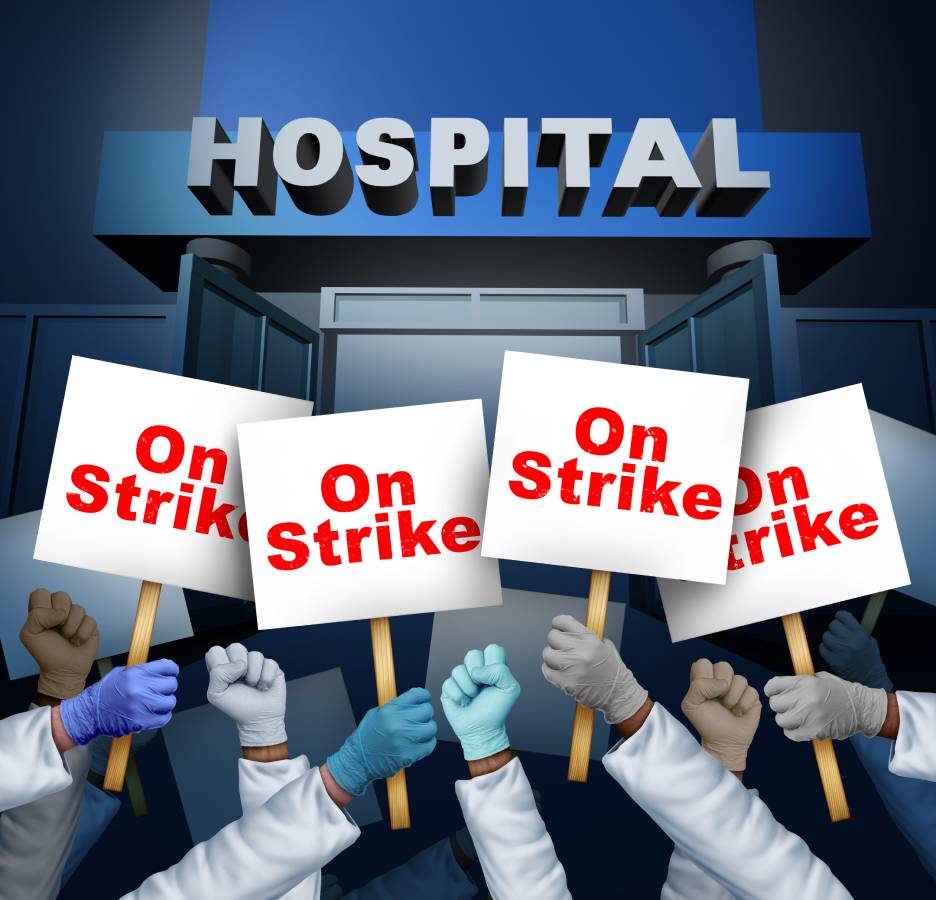Over 75,000 nursing assistants, technicians, pharmacists, and other healthcare workers at Kaiser Permanente locations nationwide went on strike from Wednesday, October 4th to Friday, October 6th (3). According to the coalition of unions involved in the strike, the walkout was the largest strike of healthcare workers in United States history (3). This year, the United States has witnessed two historic healthcare strikes: the recent Kaiser Permanente workers’ strike and the New York City nurses’ strike in early January. Understaffing, stressful–and sometimes unsafe–working conditions and widespread burnout throughout the healthcare system are what strikes have focused on in demanding better working conditions and higher pay. Though unions and labor organizing has a long history in the United States, strikes in healthcare have thus far been uncommon, and it is important to analyze motivations and potential implications carefully.
Kaiser Permanente is a highly profitable insurance provider and one of the largest nonprofit hospital systems in the United States, with locations across California, Washington, Oregon, D.C., and other states (3). On Wednesday, October 4th, healthcare workers at hundreds of Kaiser locations walked off the job to begin a three-day strike (3). The workers demanded that Kaiser address the persistent problem of understaffing at Kaiser facilities, which had only exacerbated since the start of the COVID-19 pandemic (3). While doctors and nurses were not part of the strike, the strikers included critical healthcare workers such as lab technicians and nursing assistants, causing some to worry about the strike’s impact on the quality of patient care.
According to the coalition of unions that went on strike, 11% of union positions at Kaiser remained unfilled (6). Short-staffing creates a vicious cycle in which healthcare workers who remain are forced to work within difficult conditions, increasing the rates of burnout and further incentivizing workers to leave the facility (5). Better working conditions and compensation are motivations shared by strikes inside and outside of healthcare, but there is often greater concern and pressure for those inside healthcare due to the direct and potentially serious implications on everyday people.
Eventually, the unions and Kaiser reached a tentative deal on October 13th (6). The new contract will increase wages by 21% over the next four years and establish a minimum wage of $25/hour in California and $23/hour in other states for Kaiser healthcare staff (6). Moreover, the contract restricts Kaiser’s ability to hire subcontractors or temporary staff to fill vacant positions. It also requires the healthcare giant to invest in recruiting and job training to hire and retain future employees (6).
The vast majority of healthcare facilities in the United States currently operate within the fee-for-service model, wherein patients are charged for every service that is ordered for them by a doctor (5). Some argue that fee-for-service disincentivizes the hiring of nurses and support staff. Within this model, doctors generate revenue for hospitals by ordering services such as laboratory panels, medications, specialist visits, and more (5). On the other hand, nursing assistants, LPNs, nurses, and other healthcare staff do not directly generate revenue—the services they provide are charged to patients as part of the cost of the hospital room (4). As a result, hospitals have little incentive to hire more nursing assistants, technicians, and even nurses, who are all considered a “labor cost” (4). While the concessions won by the Kaiser Permanente healthcare workers may help address the understaffing crisis at Kaiser facilities, structural changes must occur in the U.S. healthcare system to prevent future large-scale walkouts.
Healthcare strikes can be a contentious issue since healthcare worker strikes have implications on not only employer revenue but potentially the quality of patient care. Luckily, a systematic review of 15 studies on the impact of strike action on patient morbidity found that strike action did not significantly impact patient morbidity (1). Similarly, another review on patient mortality found that strikes have little impact on the mortality of in-hospital patients (2). Considering this evidence, although patient outcomes should be considered when planning strike actions, strikes do not necessarily need to be stopped because of their impact on patient wellbeing alone (1).
References
1. Essex, Ryan et al. “The impact of healthcare strikes on patient mortality: A systematic review and meta-analysis of observational studies.” Health Services Research, vol. 57, no. 6, 6 July 2022, pp. 1218-1234, doi: 10.1111/1475-6773.14022
2. Essex, Ryan et al. “The impact of strike action on patient morbidity: A systematic literature review.” The International journal of health planning and management vol. 37,3 (2022): 1311-1326. doi:10.1002/hpm.3418
3. Kaye, Danielle. “75,000 Kaiser nurses, pharmacists and other workers have walked off the job.” NPR, Oct 4 2023, Kaiser strike: More than 75,000 health care workers walk off the job : NPR
4. Scott, Dylan. “The NYC nurses strike reveals a fundamental flaw in US health care.” Vox, Jan 11 2023, What the NYC nurses strike reveals about US health care – Vox
5. Scott, Dylan. “Why 75,000 Kaiser Permanente workers have gone on strike.” Vox, Oct 5 2023, Why are Kaiser Permanente workers on strike? The US health care system doesn’t value them. – Vox
6. Simmons-Duffin, Selena. “After historic strike, Kaiser Permanente workers win 21% raise over 4 years.” NPR, Oct 14 2023, Kaiser Permanente workers win big wage and staffing concessions after strike : Shots – Health News : NPR
